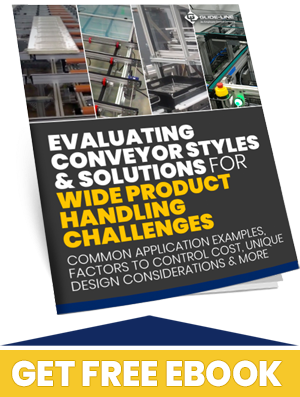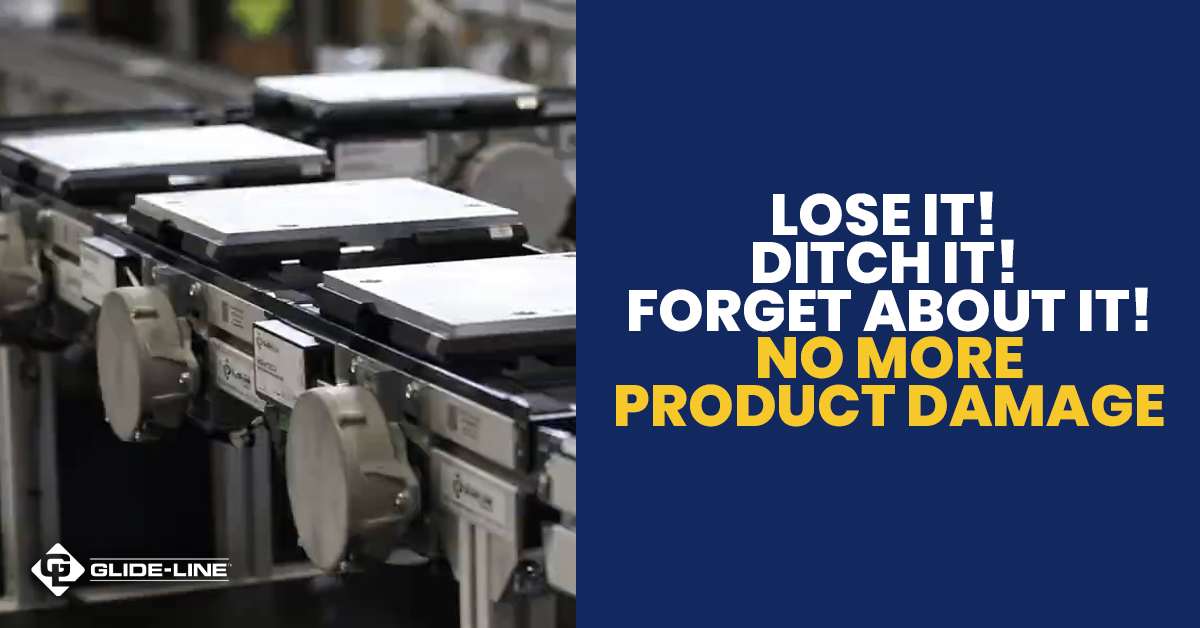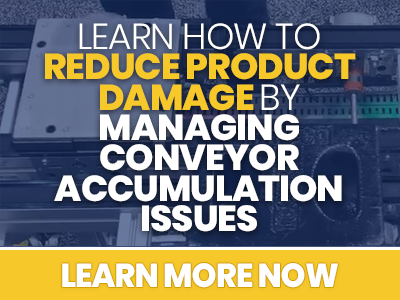Very often your customer’s precision products require special handling to ensure proper assembly without breaking, scuffing, sticking, or jarring in the conveying process. Well, our flexible conveyor systems allow you to ditch these five things in your conveying process to better protect those precision products.
 Get Rid of Backpressure
Get Rid of Backpressure
We all know that backpressure (not just in your body but also within the pallet conveyor automation system) can cause headaches. Eliminating backpressure is one of the best ways to protect your precision products. When you can use a better conveyor design to index products from one position to another without pallets colliding or having to hard-stop, you avoid lots of product jarring, overall backpressure and in general have a more elegant method of handling your product.
Check out our Zero Contact Zoned Conveyor, the better, more innovative solution to backpressure - an assembly conveyor with individually managed accumulation zones.
 Dispose of Jarring Movements
Dispose of Jarring Movements
Getting rid of backpressure in turn eliminates any jarring movements by the conveyor. By controlling the acceleration and deceleration of a conveyor, you’re able to minimize shock loading on the product. We’re able to program this aspect of the conveying process to automatically reduce this risk. The result is a gentler, more reliable conveyor when it’s needed for your client’s precision products.
Once again, we are talking about the Zero Contact Zoned Conveyor. It’s a gentler, more reliable and energy efficient conveyor solution.
 Eradicate Slippage
Eradicate Slippage
Normally you would minimize slippage through the material the pallet is made from. However, don’t be restricted to just pallet variations to meet your client’s needs. Instead, consider placing your client’s product directly onto the conveyor belt if that will assist in meeting their goals.
One of my favorite examples of minimizing slippage is a company that makes specialty refrigerator doors. To further reduce any chance of damage to the doors through the conveyor process, we eliminated the pallets altogether and placed the doors directly on the belt surface. With this change and by controlling zone to zone movement with the Glide-Line's Zero Contact Zoned Conveyor, they were able to completely eliminate a million dollars annually in lost damaged products due to this element change.
Learn more about our Direct Product Handling solutions here.
 Ditch “Normal” Belt and/or Pallet Materials
Ditch “Normal” Belt and/or Pallet Materials
 In a typical conveyor, the belts don’t directly interact with the product, but the pallet does. However, as you just saw in the video above, there are instances where the belt itself can be doing the conveying of the product.
In a typical conveyor, the belts don’t directly interact with the product, but the pallet does. However, as you just saw in the video above, there are instances where the belt itself can be doing the conveying of the product.
To achieve the grip a product may need for the process, whether it’s because there’s an incline in the conveyor, or because the product itself is slippery, or because you need faster speed to meet demands, consider an alternative belt material. A very high friction (grippy) material can help prevent glass solar panels, for example, from moving on the conveyor line at the start and stop of your client’s process.
A soft material like cotton could also be used for your client’s product; medical supplies or phone screens could benefit from a similarly soft surface to transport between workstations and prevent damage to these pieces. A final example is the addition of tiny “teeth” on a belt to help speed up indexing and preventing slippage.
The goal of these alternate belt materials is to maintain control of the pallet or workpiece carrier and, ultimately, maintain control of the product itself to reduce risk of damage during the assembly process.
 Disregard the Center of Your Conveyor
Disregard the Center of Your Conveyor
Final element to get rid of? Consider whether an open center design makes the most sense for your client’s product and get rid of the center of your conveyor.
Expanding access to the product while it’s precisely located in a lift and locate device via an open center design eliminates the need for a specialty handling system to lift the product out of the pallet and flip it over to complete work on the bottom side of the product. This reduces the cost of the pallet conveyor automation system and reduces the risk of damage to the product.
Avoid custom design with an open center design, such as the one available in the Glide-Line 360 series. We talk more about these options in our recent blog post, Why An Open Center Design Could Be The Right Solution For Your Application.
We created these innovations to traditional modular conveyors to avoid damage to your client’s precision products. Learn more in our ebook, Ultimate Guide to Creating a Flexible Automation Conveyor Application Solution.







Leave a Comment